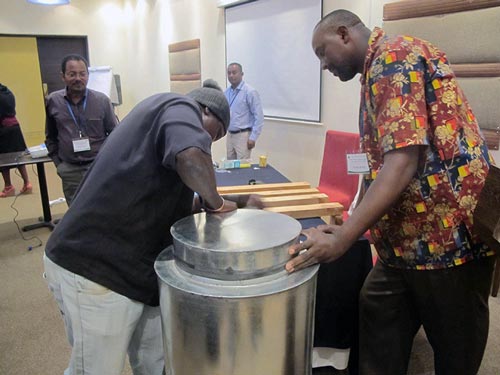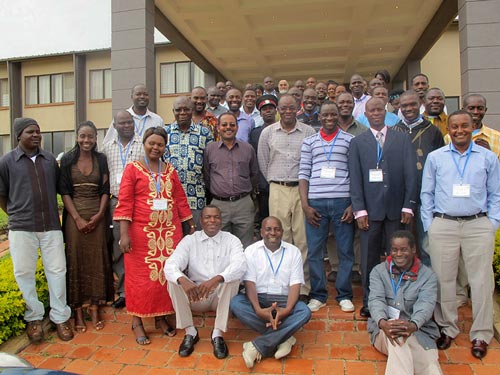By Wandera Ojanji /CIMMYT
Food security in Zambia is negatively affected by postharvest losses, said Chileshe Mulenga, permanent secretary of the country’s Eastern Province, at a training workshop for agricultural extension officers and agro-dealers on hermetic post-harvest technologies in Chipata, Zambia, on 29 January. “It is disheartening that, despite the successful efforts to increase crop production, low household food security and hunger still affect some of our people, due to a lack of effective storage,” Mulenga explained. “We must do everything possible to change this, as food security is a matter of national and regional security.”

Protecting harvested grain rather than using new land and chemical fertilizers to increase production also has economic and environment benefits, he said. “This project and training is therefore very important to us in Zambia because it focuses on the comparatively neglected storage aspect,” Mulenga said. “It is the first one of its kind and I wish it could have come at a much earlier time than now.”
The Effective Grain Storage for Sustainable Livelihoods of African Farmers Project (EGSP) Phase-II organized the workshop in collaboration with the Zambian Ministry of Agriculture. Building on the successes of the previous phase (2008-2011), EGSP-II (2012-2016) is improving food security and reducing the vulnerability of resource-poor farmers – particularly women farmers – in Eastern and Southern Africa through the dissemination of metal silos and super grain bags. The project is funded by the Swiss Agency for Development and Cooperation (SDC).
The goal of the training event was to impart knowledge and skills to extension staff and agro-dealers on managing metal silos and super grain bags, said Tadele Tefera, CIMMYT entomologist and coordinator of EGSP-II. It also raised awareness about the importance of correct post-harvest management of grain, helping extension workers and agro-dealers gain insights into different factors affecting post-harvest management.
Finally, participants learned about traditional and improved post-harvest technologies and their importance for reducing grain losses, and agro-dealers gained a greater appreciation regarding investment opportunities in the market or the technologies. “As agro-dealers, you already know that it is agriculture which is driving the economy of Eastern Province and all your businesses,” Mulenga said. “Your businesses can only grow as the farmers also grow. I therefore implore you, agro-dealers and extension staff, to use the knowledge and skills gained form this training to make these technologies available to farmers.”

The event drew more than 60 participants, including government extension officers, agro-dealers and artisans from Katete and Chipata Districts. Training facilitators included Tefera; Addis Tishome, CIMMYT entomologist; Jones Govereh, CIMMYT policy economist; Ivor Mukuka, EGSP national coordinator from the Zambia Agricultural Research Institute; and Moffat Khosa, of the Zambian Ministry of Agriculture’s Department of Mechanization.
Topics included grain storage technologies and practices; on-farm use and handling of metal silos; innovative agriculture extension systems, approaches and methodologies; and opportunity entrepreneurship and business sustainability. Kennedy Kanenga, provincial coordinator of Eastern Province, reminded the extension officers that their main job is to facilitate dissemination of information and appropriate technologies for improved agriculture.
He urged the project partners to take advantage of existing entry points to promote the adoption of the technology through agriculture camp committees, organized groups, lead farmers and institutions. He called for the formation of farmer field schools, holding field days and participation in agricultural shows to increase awareness and adoption of the technologies.
“With these strategies, we expect the adoption rates to improve,” he said. “We would like to see a situation where our farmers are keeping their grains in the metal silos for more than just a season and avoid a situation similar to the 2010-11 season when we had a bumper harvest but lost much of the grain during storage.”
 Capacity development
Capacity development